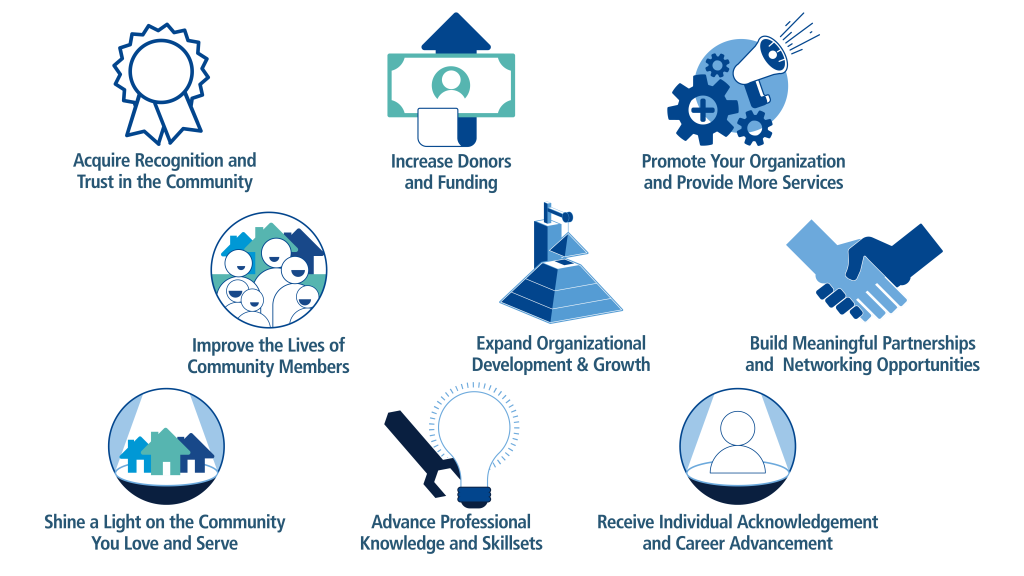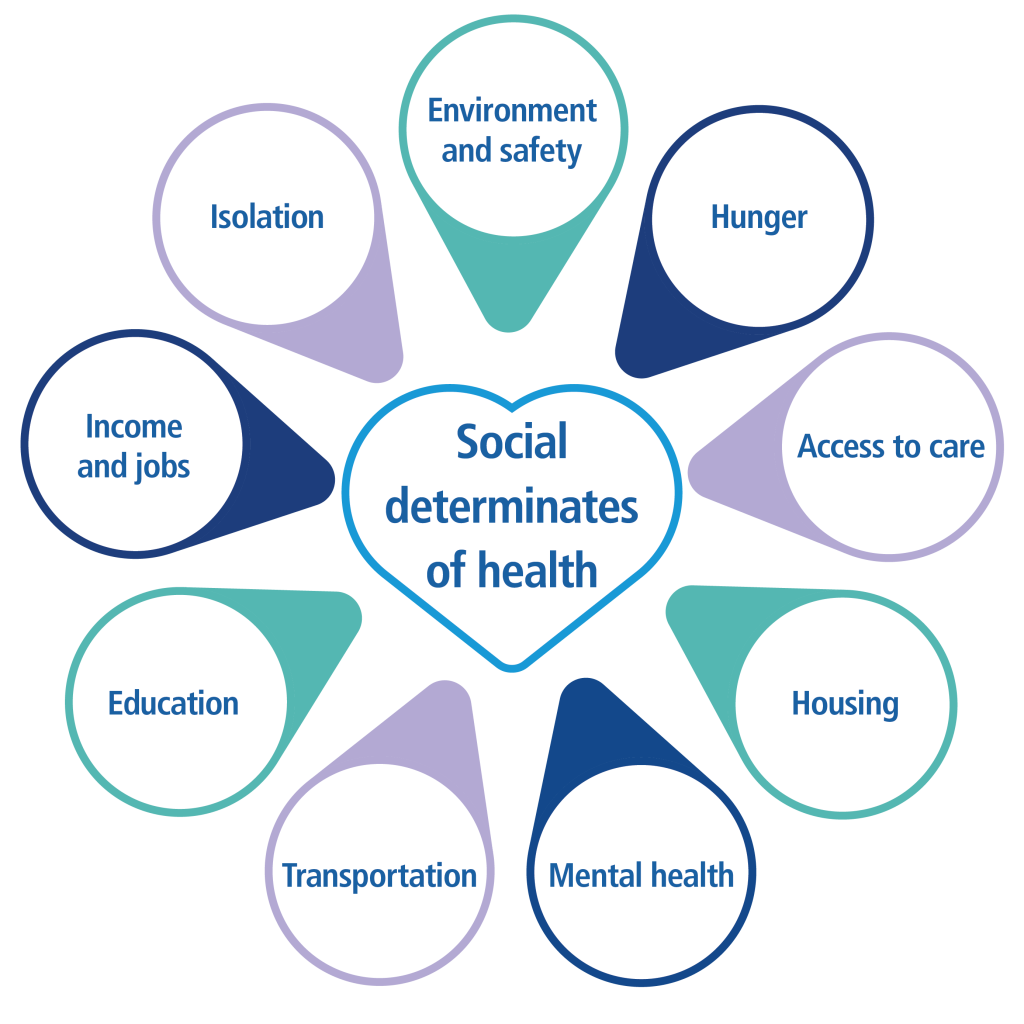Jump to topic
Search
Your willingness to become involved in a CEnR project is an important decision, and one that can have long-term effects on the overall health and wellness of the people you serve. In order to do the best research that is the most helpful, researchers conducting CEnR must listen to members of the community. Community partners provide insight on social, cultural, and individual aspects of the community.20 Ultimately, this ‘insider’ knowledge can improve health treatments and approaches, change the ways that services are provided, and identify issues that need further looking into.9 You may be wondering, however, how participation in CEnR is valuable to you, as a community partner.

Your participation in community-engaged research can offer you the opportunity to:
Impact The Community You Love Through Research
Many community members are interested in solving problems in the communities they love but wonder how their involvement in a research project will ultimately impact the lives of the people they serve.
Participating in CEnR allows you to create an impact by:
- Performing research that improves public health and reduces health disparities for members of your community.
- Developing research questions that address issues of concern to the community.
- Sharing the unique needs and desires of multicultural communities and bringing these insights into the research project.
- Mobilizing and redistributing resources for fair policies, programs and practices.
- Building meaningful partnerships between communities and research institutions.
- Developing ways to help the community that respect cultural values and honor traditions.
- Offering communities who have historically been neglected or abused by research equitable healthcare prevention and treatment options.
- Increasing public trust in medical and academic research.
- Creating strong and efficient recruitment methods that increase diverse participants.15
Promote Your Organization & Services
Community-based organizations (CBOs) partnering in research can gain local, state, and/or national attention through a variety of ways including news publications, social media announcements, presentations and displays at community and professional events, academic journals, networking groups, word of mouth, and/or more. This promotion is a huge benefit to CBO’s name recognition that can lead to increased donors, funding sources, and resources for serving communities, organizational growth, and partnership opportunities. This is a win-win for everyone involved!
Build Partnerships & Share Ideas
CEnR is conducted IN PARTNERSHIP with community members who contribute invaluable expertise and experiences to inform the development, progress, and results of a research project.20 Ultimately, these partnerships can result in connections among research team members and other organizations, all working toward the same goal. The networks created will allow you to share information about specific community concerns with opportunities to work towards solutions, encourage creativity, and maximize supportive efforts.21
CEnR brings together the knowledge of many people from varied cultures, backgrounds, and areas of expertise, allowing for an exchange of ideas that will best address the research topic. These connections can increase inclusivity during the research, as it helps with an exchange of information among stakeholders about specific community concerns. This team participation supports diversity by working together in a collaborative environment.9,22 In other words, you’ll be at the ‘table’ with others who are motivated to tackle the same topic!
Highlight Key Aspects of the Community You Service
As a community partner, your role is incredibly important because of your understanding of the community. In particular, research teams conducting CEnR will want to build on your expertise to consider a population’s opportunities to be healthy, thus revealing potential health inequities and disparities. A community’s opportunity to be healthy is measured by addressing a combination of factors, known as the social determinants of health (SDOH):23, 24
- Environment and safety
- Hunger
- Access to care
- Housing
- Mental health
- Transportation
- Education
- Income and jobs
- Isolation

As a community partner, your knowledge about the social determinants of health of the community will allow the research team to approach the project in a holistic manner. This can help potential treatments, interventions, and the ways services are provided to patients.
“I most enjoy the opportunity to work collaboratively with healthcare providers and organizations to drive the mission of improving access to high-quality care and identifying and addressing social determinants of health.”
– George Garrow, MD, Chief Medical Officer at The Primary Health Network and Community Representative/Member of the Executive Committee of Penn State CTSI
Achieve Professional or Personal Growth
Participation in a CEnR study has potential impacts for you, as a professional who serves the community. The experience can offer valuable opportunities for advancement, both for you individually and for your organization overall.
If you are a patient or caregiver partnering on a research study, you will have opportunities to expand your understanding of a particular health condition by working in a research environment. This may improve your own health practices or enhance how you support those around you.
Funding Opportunities
Collaborating with Penn State researchers can help you to identify concerns and needs within the community you serve and develop potential ways to address the problem(s). These partnerships can assist you in evaluating how well current programs are working and offer evidence-based data to obtain grant funding to continue or change existing programs. Your work with Penn State’s well-known researchers through CEnR can improve grant applications by drawing on many fields of expertise.
Did You Know?
Grant opportunities are becoming more and more readily available by community-centered, funding agencies that value community (sign up for PCORI weekly funding announcements online). To learn more about how to access and apply for funding, check out page 26 of this guide from the Clinical and Translational Science Institute at Tufts University: “Community Members’ Guide to Submitting A Community-Engaged Research Federal Grant Application” that provides step by step instructions for community-based organizations seeking research grant awards.
Check It Out!
The Lebanon Bicycle Recycle (LBR), a nonprofit that strives to increase cycling within its community, recently partnered with Penn State researchers on the Centers for Disease Control and Prevention (CDC) funded project, Racial and Ethnic Approaches to Community Health (REACH). They collaborated to develop a survey to understand community interest in bicycling in Lebanon County. LBR used data from the surveys to apply for additional funding to increase cycling in Lebanon county. Check out this awesome story on ABC 27.
Individual Acknowledgements
Researchers and academic partners have an obligation to meet certain professional goals related to review, promotion, and tenure that often include publishing information about research they have conducted.25 This is motivation not only to conduct the required research, but to do so in a way that is cutting edge, allows for the greatest application to improving health, and results in continued partnerships. CEnR is a logical fit, as it allows researchers to fulfill professional requirements in a manner that keeps the community at the forefront.
As a partner in a CEnR project, you have the opportunity to have your contributions highlighted in the form of publications generated by the research project (e.g. study newsletters, final study reports, publications in journals, internal agency communications). Professional documentation of your contributions and involvement in a research study may be highly desirable for professional development and/or career advancement. Discussions about your recognition in professional publications should occur with the study team throughout the course of the research project.
Appendix Tip!
Check out some examples of how partners have been spotlighted as partners in research studies (Appendix A).
Agency Recognition & Trust
There is power in numbers! Partnering with a variety of CEnR team members can shed light on the work multiple individuals and organizations are performing within their communities. Connections with others who share similar goals can result in local and national attention – not only for the topic and population under study, but for professionals like you dedicated to enhancing the lives of the particular population impacted by that topic. Establishing this type of network can increase trust in community organizations, researchers, and local and national policies that guide the research process.22
Public recognition and confidence in the work of community agencies has been showcased in a variety of projects conducted by Penn State researchers in partnership with the community. Community-engaged research at Penn State has resulted in critical changes to approaches in mental health, cancer screenings, and healthy eating – among others – and wouldn’t be possible without community engagement!
Check It Out!
Check out Research Spotlights showcasing some of the many examples of successful community-academic partnerships across Pennsylvania communities!
